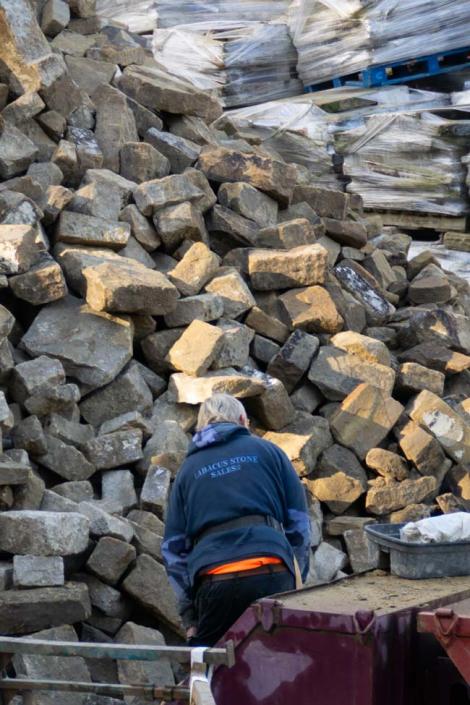Salvage - Dip 18, AA School
Exploring, Designing and Building with Reused Materials, AA School (London)
What are the potentialities of understanding architecture as a system that orchestrates flows of materials and resources? For instance: if a building is to be clad in stone, can the quarry providing the raw material be considered a part of the architectural project? What are the moral and economic implications of this proposition? How can architects take responsibility not only for the process of adding to the world’s built fabric, but also for the subtraction, processing, transport and storage of material implied by any given design? What about the collateral spatial, social and environmental conditions – the effects of a project that fall well outside the designated plot?
Ninety percent of the UK’s construction and demolition waste is ‘recovered’ – an impressive statistic, taken at face value. The vast majority of it, however, is incinerated to produce energy or recycled. Only one percent of recovered material is actually collected and retained for future reuse. In 2018, DIP18 students have begun the documentation of the architectural salvage industry in the UK, working with this one percent to make the reuse of material a more efficient, transparent and, eventually, instinctive option for the architecture and building industry.
The first part of this year's brief is to expand this research through a series of visits to salvage companies across the UK. Students are invited to conduct interviews, produce inventories of material and develop an understanding of supply chains and reconditioning processes. Equipped with these resources, students are then invited to select particular materials and suppliers in order to design a structure to be erected in Hooke Park. The brief for these designs will focus on providing temporary accommodation/shelter for students visiting the AA’s campus in the forest. Parts, if not all, of these designs will be built and tested at a 1:1 scale.
These projects should be transformable and deconstructable, emphasising building as a constant process of doing and undoing. Hooke Park has long been a laboratory for architectural projects, using wood from its own forest in their construction. We will bring reclaimed materials into Hooke Park’s repertoire, ultimately asking: can we design not just a building, but also its underlying system of material supply?
A project by
Aude-Line Dulière, James Westcott, Lionel Devlieger, Maarten Gielen
Academic year
2019 - 2020

